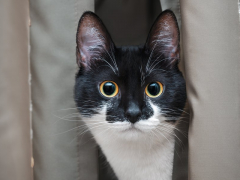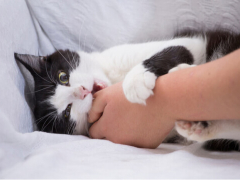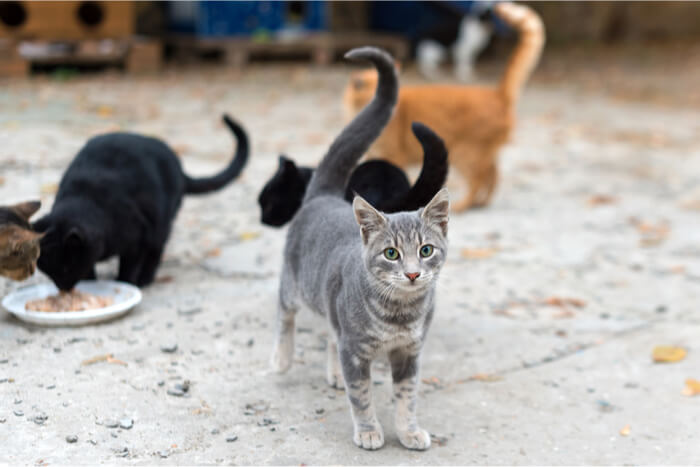
Feral cats are those that live outdoors largely without human interaction. Feral cats are not socialized, which means they usually try to avoid human interaction or react toward humans with fear or aggression.
Although feral cats may roam singly or in pairs, they often form colonies—groups of cats living together outside or in or around homes, businesses, or abandoned buildings.
Cats living in feral cat colonies are often underweight, unhealthy, and breeding at an alarming rate, which increases the colony population and adversely affects the cats’ quality of life.
Also Read: What Is The Difference Between A Stray Cat And A Feral Cat?
Feral cat colonies can become a nuisance to nearby humans due to the cats’ urine-marking behavior, loud catfights or mating, sick or dying cats hanging around, and predation to local birds and other wildlife, as well as the cats’, being a breeding ground for fleas, ticks, and other parasites that can transmit disease to outdoor cats, other pets or people.
Whether you call them feral cats, stray cats, free-roaming cats, neighborhood cats, or community cats, unowned cats living in groups outdoors stay healthier and happier when humans help care for them. It’s not uncommon for cat lovers to notice feral cats.
If you feel moved to help them, you can volunteer your time to provide the colony some care, which helps both the cats and their human neighbors.
Ways You Can Help Feral Cats
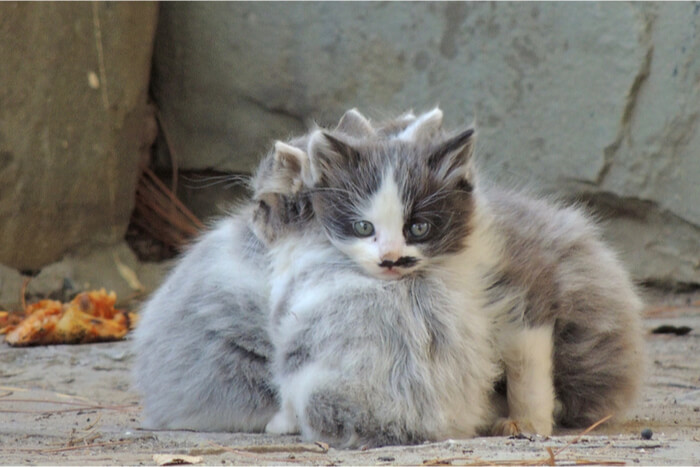
Feral kittens can be successfully socialized and adopted into pet homes if they are taken young enough.
If you know of a single feral cat or colony of community cats in your area, you can provide animal care. Kind human caretakers can help feed and water the cats, provide extra shelter (especially in the winter), look after their living area and facilitate trap-neuter-return (TNR) efforts to control population growth in the colony.
Caring for one or two feral cats living in or around your property is somewhat simple. Caring for larger colonies of cats is a bit more work. Several national animal welfare groups offer education and assistance to people who care for feral cat colonies, including Alley Cat Allies, the American Society for the Prevention of Cruelty to Animals, the Humane Society of the United States, and the Stray Cat Alliance.
According to Alley Cat Allies, some of the most helpful things a colony caretaker does for community cats include:
1. Trap-Neuter-Return
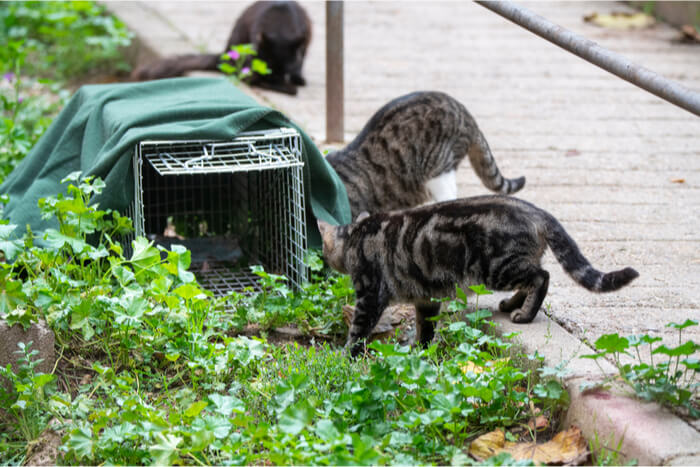
Trap-neuter-return is a humane way to manage colony size and reduce cat overpopulation.
Possibly one of the most important parts of caring for a feral cat colony is assisting with trap-neuter-return of the colony members. TNR programs involve humanely trapping feral cats, taking them to a veterinarian for spaying or neutering (and often vaccines, deworming, or other medical care), then returning the cat to the colony.
Check out Dr. Sarah Wooten’s in-depth video discussion about The Truth About Spaying and Neutering Cats: A Complete Guide.
This crucial step ensures the cats can no longer breed and contribute to pet overpopulation. TNR is also a good idea for feral cats living alone since feral cats may roam to breed. Feral kittens can also be trapped, given vaccinations, spayed or neutered, and socialized with humans, and adopted into pet homes if they are captured young enough before their socialization window closes.
TNR is a bit of a new concept for unowned community cats. In decades past, feral cats were simply trapped and euthanized since they are too wild to be adopted as pets. TNR is much more humane than euthanasia.
It curbs the feral cat population with spay/neuter while allowing the cats to live out their natural life spans. Local animal shelters, animal control, and/or cat rescue organizations may be willing to help your TNR efforts by loaning humane traps and offering free or low-cost spay and neuter services to the cats you trap. Read more about TNR here.
2. Providing Food and Water for Feral Cats
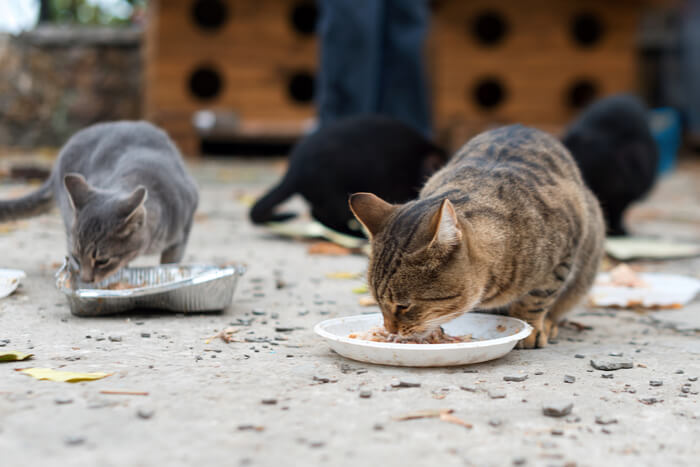
Feed the colony at scheduled times and pick up leftovers so as not to attract insects and wildlife.
Although feral cats will forage and hunt for food, feeding them regularly can help them stay healthier and also curb nuisance behaviors like rummaging through trash cans and dumpsters, and killing birds, squirrels, and other wildlife.
Rather than leave cat food out all the time, which will end up full of ants and other insects and may draw raccoons and other wildlife, serve food out at regular mealtimes (morning and evening). For larger groups of feral cats, set up “food stations” and feed as much as all the cats will consume within about 15 o 20 minutes. It may take time to gauge how much the colony needs. Pick up all leftovers after 30 minutes.
You can feed canned or wet cat food. Wet food is nutrient-dense and offers benefits like added moisture and higher protein content. Dry food is cheaper and less likely to spoil if it isn’t all eaten right away. If you’re feeding a large colony, you might ask friends, family, or neighbors for food donations to help offset the cost.
Refresh water bowls twice a day so the cats always have fresh, clean water to drink. In winter, fill with warm water or use heated bowls so the water doesn’t freeze. Alley Cat Allies offers tips for caring for community cats in winter here.
3. Providing Shelter to Feral Cats
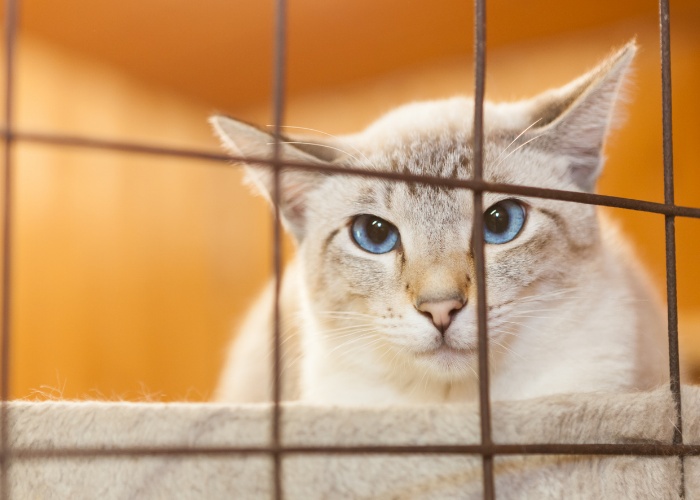
Straw is recommended as bedding inside the cat shelter as it provides warmth and stays dry even in damp conditions.
Feral cats that are living out in the open can benefit from a shelter that provides shade in summer, warmth in winter, and protection from rain, wind, and snow.
You can build cat shelters from wood or repurpose other things like large plastic storage containers flipped upside down with a hole cut in the side for an entryway. Straw is recommended as bedding inside the cat shelter as it provides warmth and stays dry even in damp conditions.
4. Monitoring Feral Cats
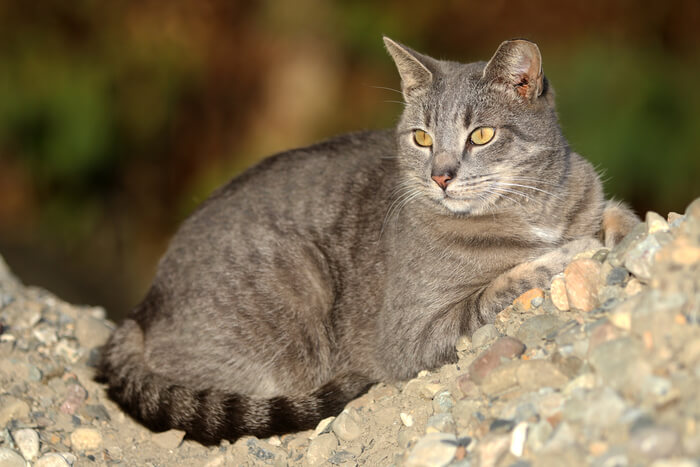
At the time of the spay or neuter, the vet removes the tip of one ear so people know the cat has been fixed.
Keep an eye on individual cats so you can aid if they become sick or injured. This is good for each cat and also the colony as a whole, especially when cats develop communicable diseases.
Some colony caretakers keep a journal that identifies each cat with a physical description (or photo), sex (male or female), whether they are spayed or neutered, past injuries or illnesses, and any health concerns.
If a cat needs help, reach out to your veterinarian who may be able to provide medication or advise trapping the cat and bringing it in for treatment.
Improve Quality of Life for Feral Cats
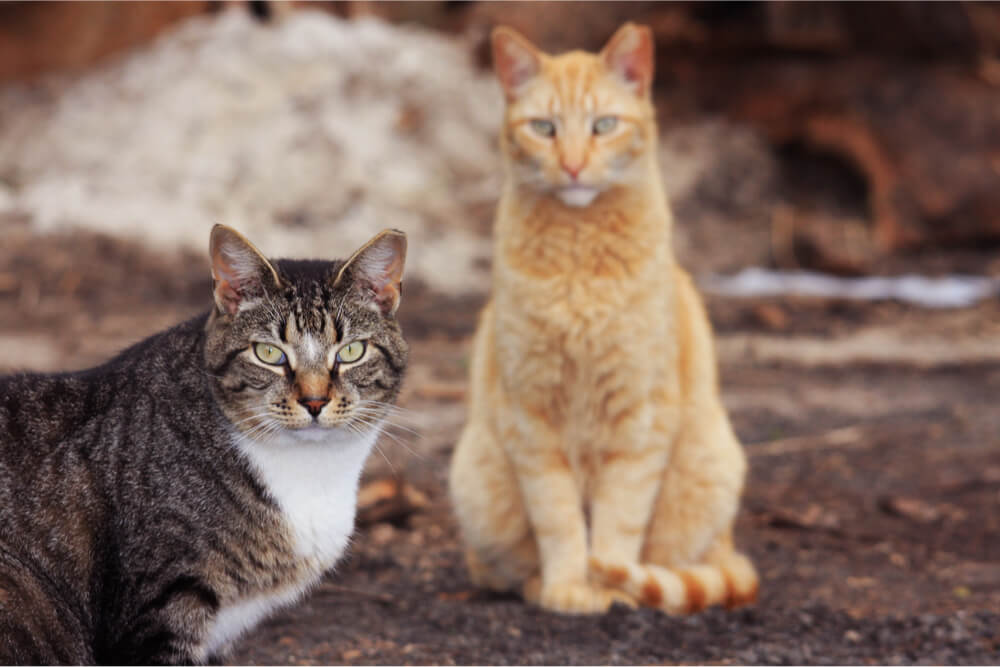
Providing basic care for feral cats improves their quality of life and prevents them from becoming a nuisance to the community.
Caring for feral cats is humane and beneficial for the cats and your community. When feral cats live in a managed colony, nuisance behaviors are fewer, and the cats can coexist more peacefully with their human neighbors. Human caregivers even help feral cats live longer, healthier lives.
The ASPCA estimates that feral cats living on their own without care have an average life span of just 2 years, but feral cats being looked after by a human caretaker can live as long as 10 years.
Frequently Asked Questions
How can you tell if a cat is feral?
Feral cats act more like wild animals than pet cats. Most feral cats avoid human contact, running away, hissing or growling if approached. Do not try to handle a feral cat or you may be bitten or scratched.
How do you take care of a feral cat?
You can help make a feral cat’s life better by providing food and clean water, having it spayed or neutered, and monitoring its health so you can get it veterinary care if it becomes sick or injured.
Can you domesticate a feral cat?
Adult feral cats can’t usually be domesticated, though there are cases of exceptionally friendly feral cats enjoying close contact with humans. Feral kittens can be successfully socialized to humans if they are taken at 8 weeks or younger.
What is the lifespan of a feral cat?
According to the ASPCA, feral cats living on their own without care have an average life span of just 2 years. Feral cats being looked after by a human caretaker can live as long as 10 years.
